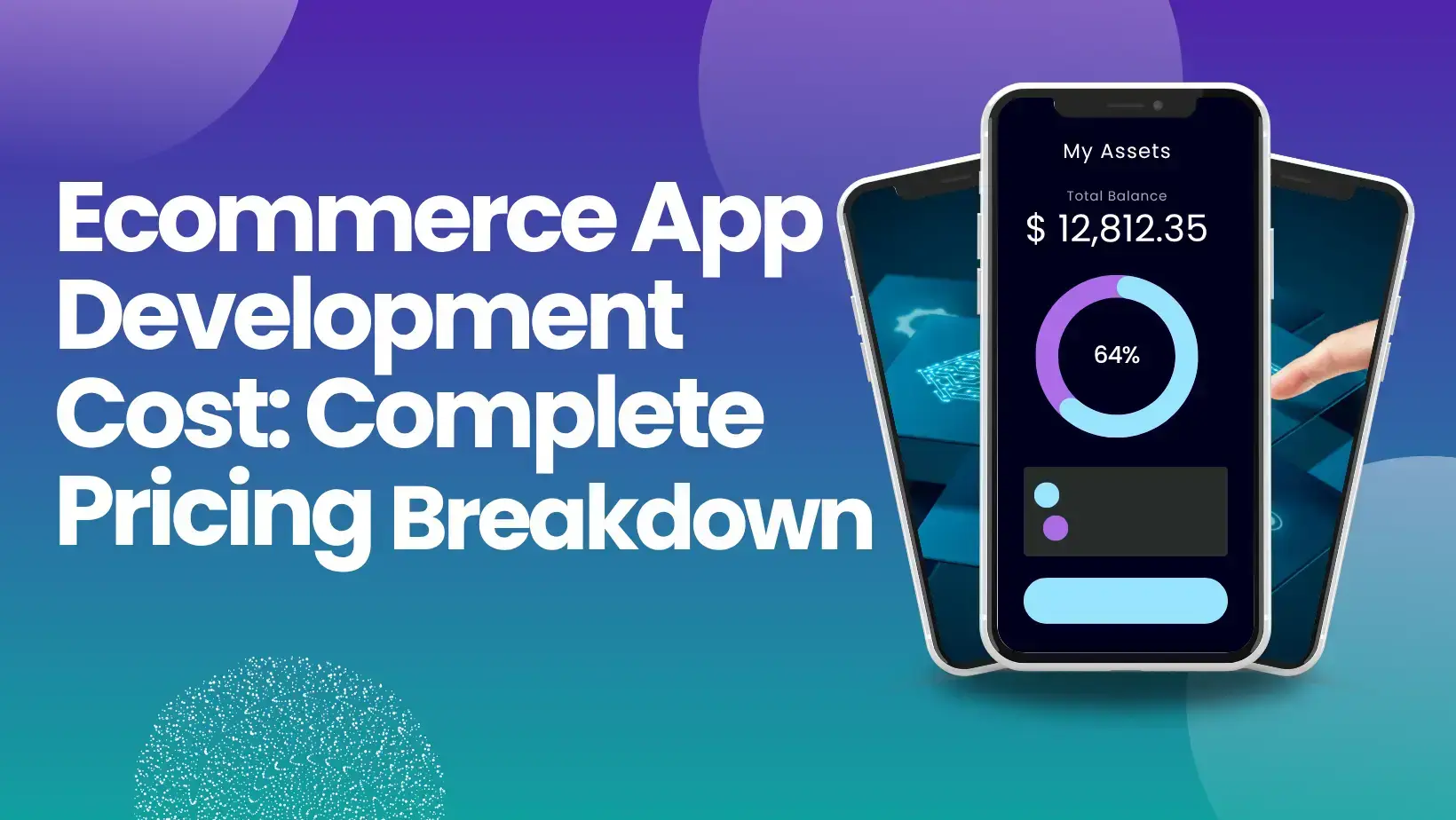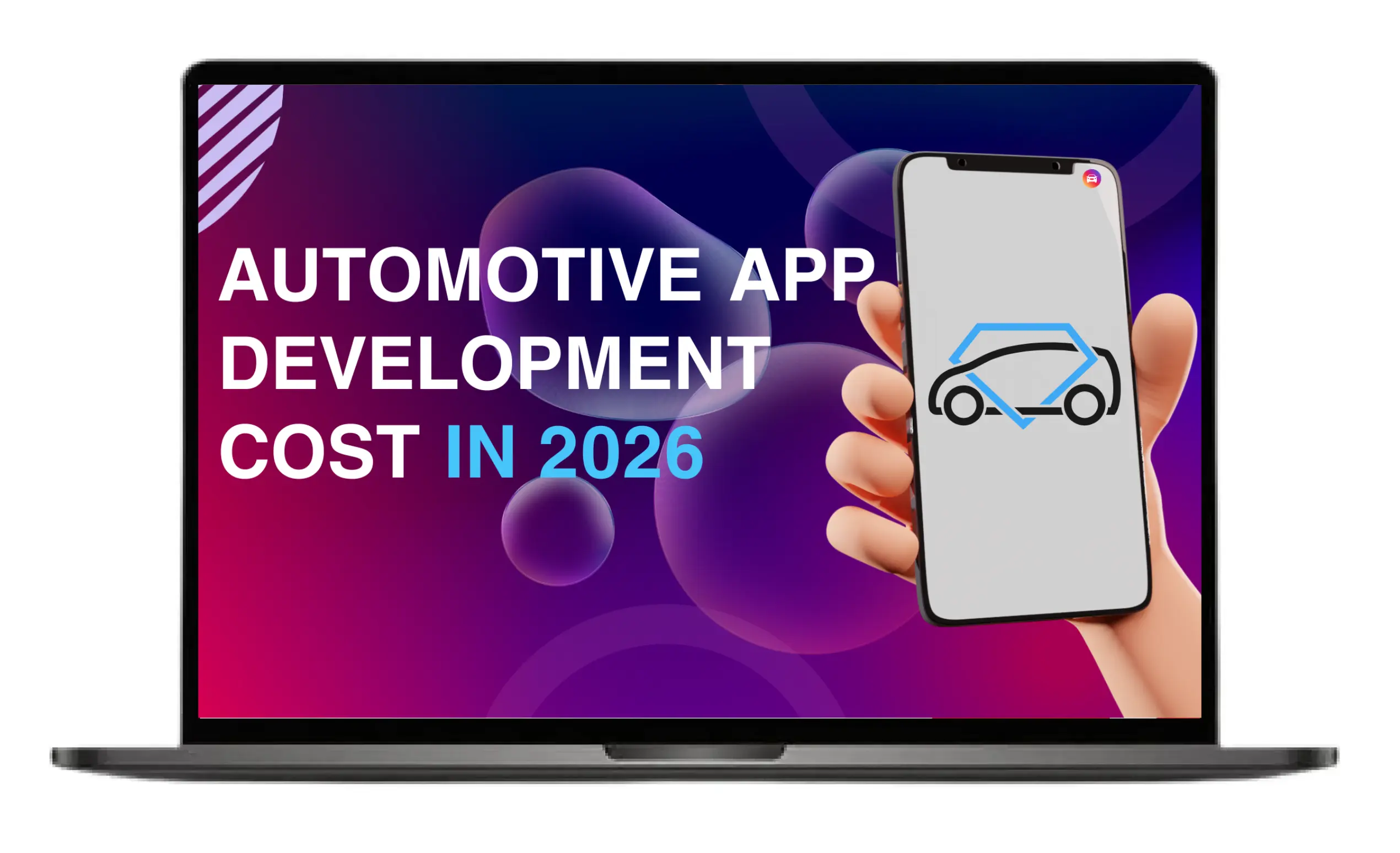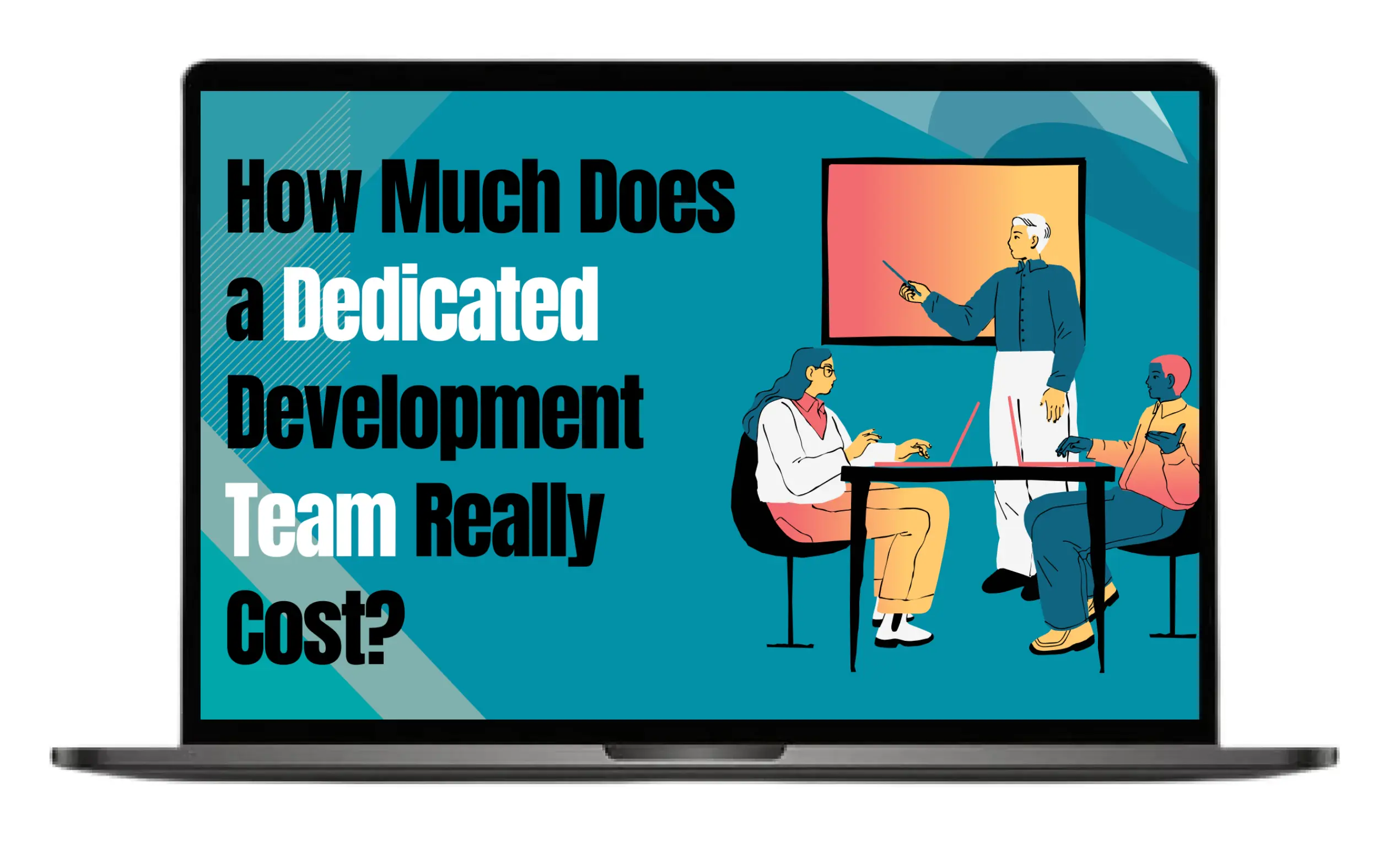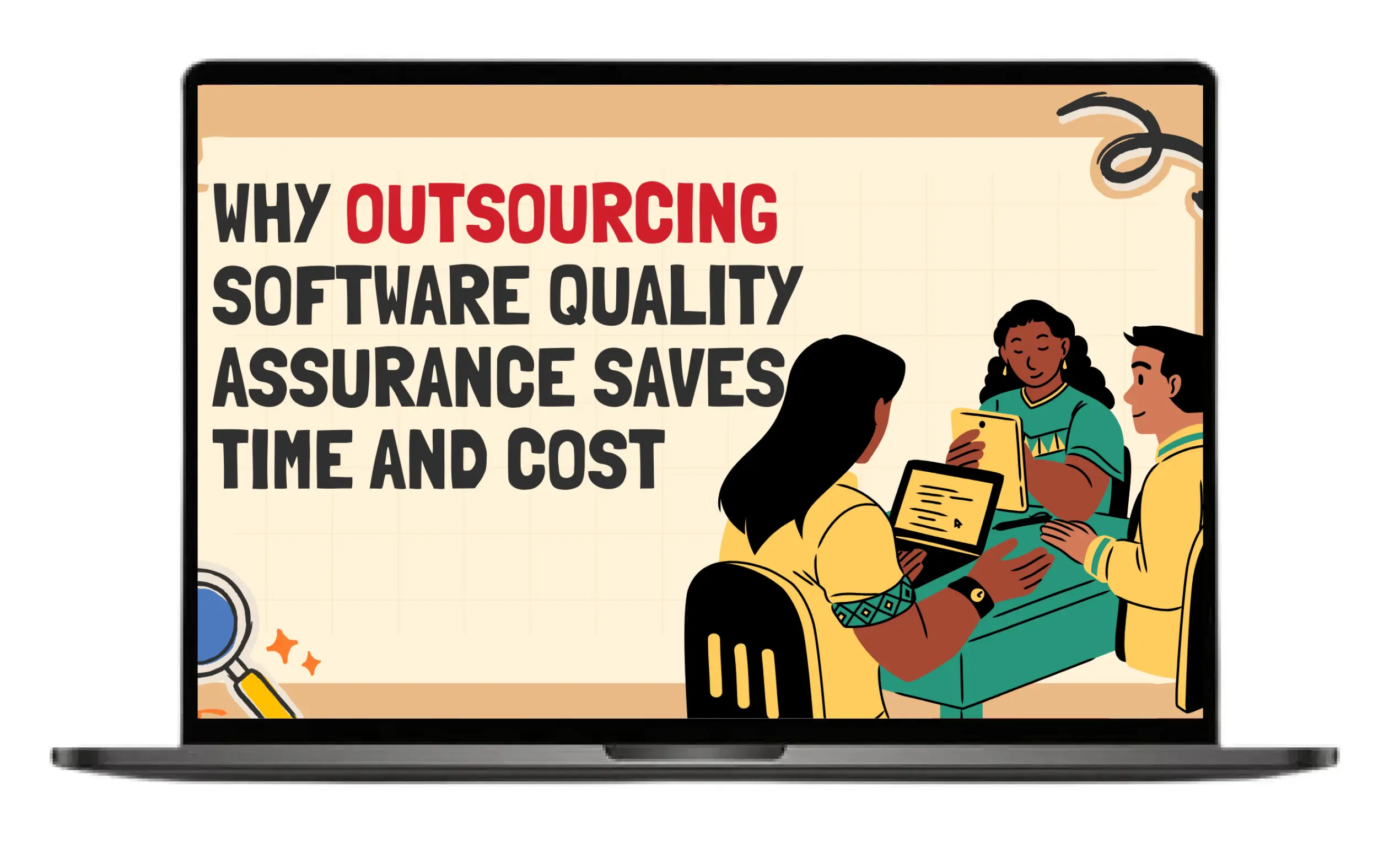
Online shopping has become powerful as mobile commerce is projected to reach 4.9 trillion dollars worldwide in 2025. Today, companies require quick, safe, and easy-to-use ecommerce applications in order to remain competitive. The question that most entrepreneurs ask is: How much does it cost to build an ecommerce app? It is not a predetermined answer, and it can vary based on a number of factors, such as features, design, platform, and development team.
In this blog, we are going to dissect the cost of the ecommerce app development step-by-step so that you can budget well.
What is an ecommerce App?
An ecommerce app is a mobile or web-based application that enables its users to shop, browse, and make payments online. It serves as an online shop through which clients are able to order, monitor delivery, and pay safely. For example, Amazon, eBay, and Shopify-powered apps are some popular ecommerce apps.
Types of ecommerce Apps and Their Costs
There are various types of ecommerce apps, and each has a price range based on features, scale, and integrations. The selection of the appropriate type is based on your business model and audience.
B2C (Business-to-Consumer) Apps
They are the most popular applications in which companies sell directly to their customers (such as Amazon or Zara).
- Price: $15,000 - 50,000+ based on catalog size and design.
B2B (Business-to-Business) Apps
Constructed on the requirements of wholesalers and suppliers who make bulk purchases and issue invoices.
- Price: $20 000 - 60,000+ based on high-level order management.
Marketplace Apps
Websites where sellers can post and customers can purchase (such as eBay or Etsy).
- Price: $30,000 - $80,000+ as they demand vendor dashboards, commissions, and powerful backend systems.
Subscription-Based Apps
Applied to recurring products or services (such as meal kits, cosmetics boxes, or Netflix-style models).
- Price: $20,000 - $55,000+ based on subscription management and payment platforms.
Niche or Single-Product Apps
Single applications specializing in a single product or service line (such as a brand app that only offers shoes, or only cosmetics).
- Price: $10,000 to $25,000 and above because they are cheaper to construct and can be expanded.
Ecommerce App Development Cost Breakdown
Creating an ecommerce application goes beyond code. The prices differ in terms of platform, design, integrations, and support. The following is a breakdown of the primary cost categories in iOS, Android, and Web apps.
Cost Category |
iOS App Cost |
Android App Cost |
Web App Cost |
UI/UX Design Cost |
$1,500 – $9,000+ |
$1,000 – $6,000+ |
$2,000 – $12,000+ |
Ecommerce App Development |
$10,000 – $23,000+ |
$8,000 – $20,000+ |
$5,000 – $25,000+ |
Payment Gateway Integration |
$1,700 – $7,000+ |
$1,000 – $4,000+ |
$2,000 – $8,000+ |
App Maintenance (per year) |
$1,500 – $5,000+ |
$1,000 – $4,000+ |
$2,000 – $7,000+ |
Marketing Cost |
Variable |
Variable |
Variable |
Key Cost Numbers of Ecommerce App Development at a Glance
The cost of ecommerce app development can differ depending on the platform, complexity, and scalability. Following is a brief table of estimated cost ranges of various platforms and approaches.
Platform |
MVP Range (USD) |
Scale Range (USD) |
Shopify Mobile (Buy SDK) |
$30k – $45k |
$60k – $120k |
WooCommerce + Flutter |
$35k – $55k |
$80k – $150k |
Magento / BigCommerce |
$50k – $80k |
$120k – $220k |
Headless (Custom API) |
$70k – $100k |
$180k – $300k |
Why Ecommerce App Development Costs Vary?
An ecommerce app does not cost the same everywhere. It varies due to the expertise of the developers, their locations, and the regulations in the app stores. Here's why costs go up and down.
1. Demand for Flutter Developers
Flutter is an application that assists in creating both iPhone and Android applications simultaneously. There is a large demand for Flutter developers in 2025. However, skilled people are not readily available. Jobs requiring Flutter increased by 38% and developer supply only increased by 19%.
This implies that developers are overcharging. Their hourly rate in the U.S. rose by 40% in only a year to $95. The prices can continue to increase by 8-10% every few months.
2. Developer Costs by Country
The cost of hiring varies depending on the location of your developer.
Country / Dev Region |
MVP Range (USD) |
Scale Range (USD) |
Avg. Hourly Rate |
United States (SF, NYC, Florida) |
$110k – $160k |
$220k – $300k |
$130 |
United Kingdom (London) |
$95k – $140k |
$190k – $260k |
$115 |
Germany (Berlin, Munich) |
$90k – $135k |
$185k – $250k |
$110 |
Eastern Europe (Poland, Ukraine) |
$45k – $70k |
$95k – $150k |
$55 |
India, Pakistan |
$25k – $40k |
$55k – $95k |
$30 |
Southeast Asia (Vietnam, Philippines) |
$28k – $45k |
$60k – $105k |
$35 |
China (Shanghai, Shenzhen) |
$40k – $65k |
$85k – $140k |
$50 |
LATAM (Mexico, Brazil) |
$30k – $50k |
$65k – $115k |
$38 |
Thus, the same ecommerce application can be far cheaper to develop in Asia than in the U.S. However, quality and time zones can prove to be a challenge at times.
3. Apple and Google Fees
Apple and Google also get a percentage when your app is published on their stores.
- Apple App Store: Apple takes 15% if your app makes less than $1M per year. If you earn more, it takes 30%.
- Google Play Store: Same, but has a cheaper alternative of 26% in case of User Choice Billing.
- European Union Rules (2025): Apps in Europe might require additional payment systems due to new legislation. This brings 60-80 hours of additional work to developers.
Core Cost Drivers for Ecommerce App Development
The following are the main drivers that influence the cost of ecommerce app development:
Platform Choice
The platform that you use will determine the base price of your application. Shopify and WooCommerce are less expensive, whereas Magento or custom applications are more expensive. An example is a fashion shop built on Shopify, which costs the store less than a big marketplace using Magento.
Frontend Architecture
The technology stack modifies time and cost. Native iOS/Android is expensive, and Flutter or React Native is cheaper. A startup saved 20 percent by using Flutter only rather than creating two different applications.
UX Complexity
The cost increases with the number of screens, animations, and details of the design. Basic designs are less expensive, whereas dark mode or accessibility requires additional effort. An app of 40 + screens in food delivery is significantly more expensive than a 10 screen store app.
Product Catalogue Size and Search
A simple catalog that offers a simple search is less expensive than one that provides thousands of items and advanced filters. Enhanced search engines, such as Algolia, add to the expenses. In an illustration, a grocery app consisting of 5,000 items required a more robust search engine compared to a boutique shop.
Payment Gateway Stack
The number of gateways increases the cost. Stripe or PayPal are simple, but Apple Pay, BNPL, or crypto bring additional charges and code. A clothing app had to include PayPal and BNPL to increase sales, but it paid more to be integrated.
Shipping & Fulfilment APIs
When you combine real-time courier tracking and rates, the cost increases. Basic flat-rate shipping is less expensive. An electronic shop had to pay more to connect with FedEx and DHL to get real-time updates.
User Features Tiers
Basic applications include a login, cart, and checkout. Premium apps include wishlists or AR try-on, or AI suggestions. One of the beauty brands added an AR lipstick try-on, which increased the cost by $20k but increased the engagement.
Hidden & Post-Launch Costs
Most of the proposals merely display a price of $50k MVP. But real costs appear later. Without planning, you can exhaust your budget in the first year.
App Store fees & revenue share
Apple charges you $99/year, and Google charges you $25 one time. Both charge 15% commission below $1M sales and 30% over. This is without refunds or discounts. It is better to prepare for the 30 percent worst-case.
Server & CDN overage
Simple hosting costs as little as $250 a month. However, in periods of sales such as Black Friday, traffic can increase 10 times. This may increase by $1,000 or more in unexpected bills. Save money by using autoscaling and purchasing credits in advance.
Payment-processing reserve
High-risk businesses may pay 10% of their sales to Stripe and others within 90 days. In the case of a sale of 200k, 60k can be tied up monthly. This damages cash flow; plan ahead.
Ongoing UX A/B testing
Software is not the only expensive part of testing new designs. Some tools such as Optimizely, cost $50k/year. Even free tools require developer time. Estimate approximately $5k/annum on regular A/B tests.
OS updates break apps
Apple and Google release new versions of the OS annually. To maintain your app, you require tests and repairs. This may cost approximately 6k per annum. Otherwise, your app can be deleted.
Customer-support tools
Applications such as Zendesk or Intercom are agent-based. The price with 5 agents will be approximately 4k-5k annually. You also require developer time to tie order data into tickets.
Cyber-liability insurance
Online store insurance ranges between $ 1200 - 2400 annually. A security test is also requested by some insurers, and it may increase the cost by an additional $5k. In its absence, premiums may skyrocket.
7 Actionable Tips to Reduce Budget Without Sacrificing Quality
The following are 7 tips you can use to reduce the cost of ecommerce app development:
- Begin with one platform, typically iOS, that produces approximately 65% of fashion app revenue. You can add Android later.
- Install the Shopify Mobile Buy SDK rather than creating a custom checkout. It is quicker to start and does not have excessive development expenses.
- Use ready-made Flutter UI kits to spend less time on design and coding. This hastens the process of development without compromising quality.
- Push AR or AI to Phase 2. Introduce basic features initially and introduce advanced features as revenue increases.
- Use Firebase Analytics over custom dashboards. It is free, dependable, and it saves thousands of dollars in development.
- Store product images on Cloudflare Images. It can reduce image delivery expenses up to 40%.
- Include a 12-month maintenance plan at a constant 15%. It is less expensive than the hourly cost of each bug fix or update.
The ecommerce app development process at Red Star Technologies already incorporates all these cost-saving tips, meaning that clients are able to get quality apps without necessarily spending a lot of money.
Why Red Star Technologies is the Right Partner for ecommerce App Development
Selecting the appropriate partner is equivalent to selecting the appropriate technology. In Red Star Technologies, we specialize in developing fast, secure, and scalable ecommerce apps. Our team has work experience with such platforms as Shopify, WooCommerce, Magento, and custom solutions. We create a user-friendly design with easy navigation, easy checkout, and a high level of security.
FAQs
1. How much does an ecommerce app cost in 2025 for a startup?
An ecommerce application may cost a startup between $15,000 and $40,000 as an investment. It is based on features, design, and iOS, Android, or both.
2. What is the ecommerce app development budget for 100k SKUs?
Applications that have extensive product ranges (100,000 or more) require high search and server capabilities. Budgets typically lie within a scope of 50 to 120000 dollars based on filters, search, and database configuration.
3. How long does it take to build an ecommerce app with Flutter?
An average Flutter ecommerce app is completed within a span of 3-5 months. In case the app has more sophisticated features, such as AR or AI suggestions, it can require 6-7 months.
4. Which hidden costs increase the ecommerce app price post-launch?
The hidden expenses are usually the fees at the app stores, server overloads during peak usage, payment processing maintenance, customer service applications, and annual update repairs on the OS. These can add $5,000 - $15,000 per year.
5. Can I migrate my WooCommerce store into a mobile app?
Yes. Frameworks such as Flutter can be used to turn a WooCommerce store into a mobile application. This would typically cost between $8,000 and $25,000 based on design, speed and additional features.



















